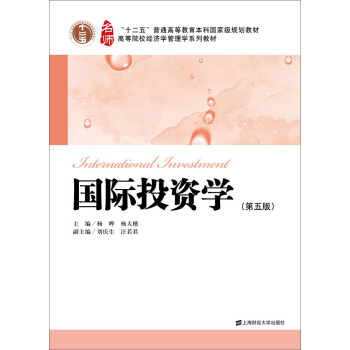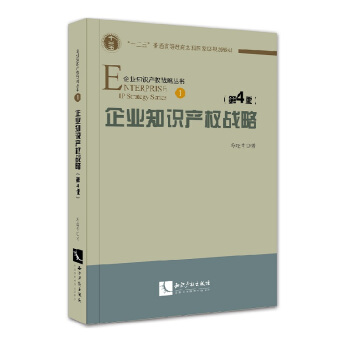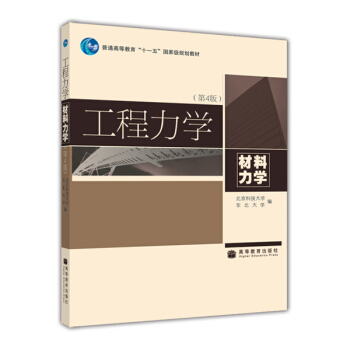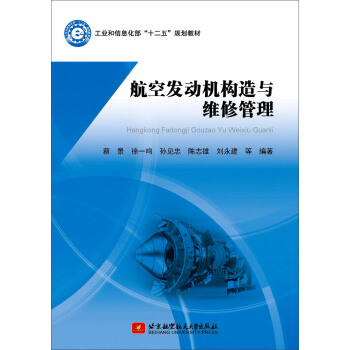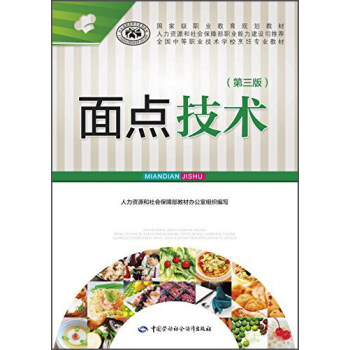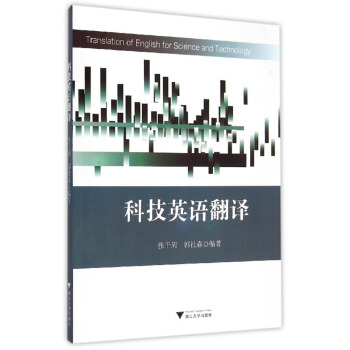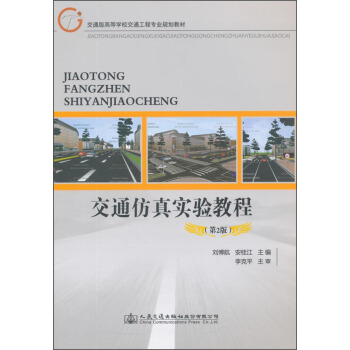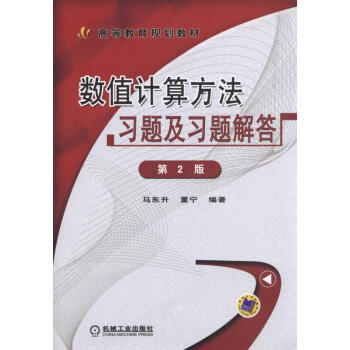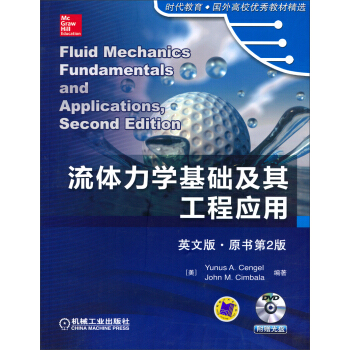

具体描述
内容简介
《流体力学基础及其工程应用(英文版)(原书第2版)》涵盖了流体力学的基本原理和方程,列举了大量真实世界中的各种工程实例,通过强调物理背景,提供精彩的图片和可视化辅助手段,让学生对流体力学有一个直观的理解并认识到流体力学是如何应用于工程实践的。全书共15章,包括引言与基本概念,流体的性质,压强与流体静力学,流体运动学,质量、伯努利与能量方程,流动系统的动量分析,量纲分析与模型化,内流,流体流动的微分分析,纳维�菜雇锌怂狗匠痰慕�似解,外流,可压缩流动,明渠流动,涡轮机械,及计算流体动力学导论。
本书后附有DVD光盘,内容包括录像、CFD动画库和EES软件等丰富资源。
本书可作为高等工科院校相关专业的流体力学教材,也可供相关专业科研和工程技术人员参考。
作者简介
作者:(美)森哲尔、辛巴拉尤努斯·A.森哲尔(Yunus A.Cengel),美国内华达大学机械工程荣誉退休教授。他在土耳其伊斯坦布尔技术大学获得机械工程学士学位,在北卡罗莱纳州立大学机械工程系获得硕士和博士学位。他的研究领域是可再生能源、脱盐、可用性分析、传热强化、辐身热传递和能量储存等。1996-2000年,他担任内华达大学工业评估中心主任,带领学生到北内华达和加利福尼亚的一些生产厂家做工业评估,筹划能量储备,降低消耗,为他们提供提高生产力的报告。
森哲尔博士是被广泛使用的教科书Thermodynamics:An Engineering Approach(《热动力学:工程研究方法》第6版,2008)的作者之一,该书由麦格劳一希尔公司出版。他还是该出版社出版的另两本教科书:Heat Transfer:A PracticalApproach(《热传输:实用研究方法》第3版,2007)的作者,以及Funda—mentals of Thermal—Fluid Sciences(《热流体科学基础》第3版,2008)的作者之一。他的部分教科书已被翻译成中文、日文、韩文、西班牙文、土耳其文、意大利文和希腊文。
森哲尔博士获得了多个优秀教师奖,他还于1992年和2000年两次获得美国工程教育学会(ASEE)为优秀原创作者设立的Meriam/Wiley卓越作者奖。
森哲尔博士是内华达州的注册教授级工程师,也是美国机械工程师学会(ASME)和美国工程教育学会的会员。约翰·M.辛巴拉(John M.Cimbala),美国宾夕法尼亚州立大学机械工程教授。他在宾夕法尼亚州立大学获得航空航天工程学士学位,在加利福尼亚理工学院获得航空硕士学位,1984年在加利福尼亚理工学院获得航空博士学位,师从AnatolRoshko教授(辛巴拉永远感激他)。他的研究领域包括实验与计算流体力学、热传输、湍流、湍流建模、室内空气质量和空气污染控制等。1993—1994年,他利用大学学术休假期间到美国宇航局(NASA)兰利研究中心从事计算流体力学和湍流建模研究工作。
辛巴拉博士是三本教科书的作者之一:Indoor Air Quality Engineering:Environmental Health and ControlofIndoor Polutants(《室内空气质量工程:健康与室内污染控制》,2003),该书由Marcel-Dekker公司出版;Essentials ofFluid Mechanics:Fundamentals and Applications(《流体力学要素:基础与应用》,2008)和Fundamentals of Thermal—Fluid Scinces(《热流体科学基础》第3版,2008),这两本书均由麦格劳-希尔公司出版。他还与别人共同编著了其他一些书,他也是数十篇期刊和会议论文的作者或共同作者。从www.mne.psu.edu/cimbala网站上可查到他更多的信息。
辛巴拉教授获得多个优秀教学奖,本书就是他热爱教学的一个见证。他是美国航空航天学会(AIAA)、美国机械工程师学会、美国工程教育学会和美国物理学会(APS)的会员。
内页插图
目录
前言
第1章 引言与基本概念
1.1 引言
1.2 不滑移条件
1.3 流体力学简要历史
1.4 流动分类
1.5 系统与控制体
1.6 量纲与单位的重要性
1.7 工程问题数学建模
1.8 问题求解技巧
1.9 工程软件包
1.10 准确度、精确度与有效数字
小结
参考文献
应用聚焦:核爆炸与雨滴有什么共同点
习题
第2章 流体的性质
2.1 引言
2.2 密度与比重
2.3 蒸气压与空化
2.4 能量与比热容
2.5 可压缩性与声速
2.6 黏性
2.7 表面张力与毛细现象
小结
应用聚焦:空化
参考文献
习题
第3章 压强与流体静力学
3.1 压强
3.2 压强测量装置
3.3 流体静力学引言
3.4 作用在淹没平板上的静水压力
3.5 作用在淹没曲板上的静水压力
3.6 浮力与稳定性
3.7 以刚体形式运动的流体
小结
参考文献
习题
第4章 流体运动学
4.1 拉格朗日与欧拉法
4.2 流动类型与流动可视化
4.3 流体流动数据图
4.4 其他运动学描述
4.5 涡量与旋度
4.6 雷诺输运理论
小结
应用聚焦:流体驱动器
参考文献
习题
第5章 质量、伯努利与能量方程
5.1 引言
5.2 质量守恒
5.3 机械能与效率
5.4 伯努利方程
5.5 一般能量方程
5.6 定常流能量分析
小结
参考文献
习题
第6章 流动系统的动量分析
6.1 牛顿定律
6.2 选择控制体A
6.3 作用在控制体A上的力
6.4 线性动量方程
6.5 考察旋转运动与角动量
6.6 角动量方程
小结
参考文献
习题
第7章 量纲分析与模型化
7.1 量纲与单位
7.2 量纲齐次性
7.3 量纲分析与相似性
7.4 重复量方法与白金汉Π定律
7.5 实验研究、模型与不完全相似
应用聚焦:苍蝇如何飞行
小结
参考文献
习题
xiii
目录xii
流体力学基础及其工程应用第8章 内流
8.1 引言
8.2 层流与湍流流动
8.3 入口区域
8.4 管中层流流动
8.5 管中湍流流动
8.6 次要损失
8.7 管网与泵系统
8.8 流量与速度测量
应用聚焦:孔板流量计如何工作或不工作
小结
参考文献
习题
第9章 流体流动的微分分析
9.1 引言
9.2 质量守恒——连续性方程
9.3 流函数
9.4 线性动量微分方程——柯西方程
9.5 纳维.斯托克斯方程
9.6 流体流动问题的微分分析
小结
参考文献
习题
第10章 纳维.斯托克斯方程的近似解
10.1 引言
10.2 运动的无量纲方程
10.3 蠕流近似
10.4 流动无黏区的近似
10.5 无旋流近似
10.6 边界层近似
小结
参考文献
应用聚焦:水滴形成
习题
第11章 外流:阻力与升力
11.1 引言
11.2 阻力与升力
11.3 摩擦与压差阻力
11.4 常用几何形状物体的阻力系数
11.5 绕平板的平行流动
11.6 绕圆柱与圆球的流动
11.7 升力
小结
参考文献
应用聚焦:减阻
习题
第12章 可压缩流动
12.1 驻点性质
12.2 一维等熵流动
12.3 喷管内的等熵流
12.4 激波与膨胀波
12.5 具有热传输并忽略摩擦的管道流(瑞利流)
12.6 具有摩擦的绝热管道流(范诺流)
应用聚焦:激波与边界层相互作用
小结
参考文献
习题
第13章 明渠流动
13.1 明渠流分类
13.2 弗劳德数与波速
13.3 比能
13.4 质量守恒与能量方程
13.5 明渠均匀流
13.6 最佳水力断面
13.7 渐变流
13.8 急变流与水跃
13.9 流动控制与测量
小结
参考文献
习题
第14章 涡轮机械
14.1 分类与术语
14.2 泵
14.3 泵的相似律
14.4 涡轮机
14.5 涡轮机相似律
应用聚焦:旋转燃料喷嘴
小结
参考文献
习题
第15章 计算流体动力学导论
15.1 引言与基础
15.2 层流CFD计算
15.3 湍流CFD计算
15.4 带热传输的CFD
15.5 可压缩流动CFD计算
15.6 明渠流动CFD计算
应用聚焦:虚拟胃
小结
参考文献
习题
附录
特性参数表与曲线图
术语表
索引
xv
CONTENTSxvi
FLUID MECHANICSxvii
CONTENTSxviii
FLUID MECHANICSxix
CONTENTS
精彩书摘
1-1 INTRODUCT00NMechanics is the oldest physical science that deals with both stationary andmoving bodies under the influence of forces.The branch of mechanics thatdeals with bodies at rest is called statics,while the branch that deals withbodies in motion is called dynamics.The subcategory fluid mechanics isdefined as the science that deals with the behavior of fluids at rest(fluid sta.tics)or in motion(fluid dynamics),and the interaction of fluids with solids0r other fluids at the boundaries.Fluid mechanics is also referred to as fluiddynamics by considering fluids at rest as a special case of motion wlth zerovelocity(Fig.1一l).
Fluid mechanics itself is also divided into several categories.Thc study ofthe motion of fluids that can be approximated as incompressible(such as liq.uids.especially water,and gases at low speeds)is usually referred to as hydro.dynamics.A subcategory of hydrodynamics is hydraulics,whch deals withliquid flows in pipes and open channels.Gas dynamics deals with the flow offluids that undergo significant density changes,such as the flow of gasesthrough nozzles at high speeds.The category aerodynamics de:als with theflow of gases(especially air)over bodies such as aircraft,rockets,and automo.biles at high or low speeds.Some other specialized categories such as meteo rology,oceanography,and hydrology deal with naturally occurring flows.What!s a Fluid?
You will recall from physics that a substance exists in three primary phases:solid.1iquid,and gas.(At very high temperatures,it also exists as plasma.)A substance in the liquid or gas phase is referred to as a fluid.Distinctionbetween a solid and a fluid is made on the basis of the substance's ability toresist an applied shear(or tangential)stress that tends to change lts shape.Asolid can resist an applied shear s~ess by deforming.whereas a flMzddcfoFillS continuously under the influence of a shear stress,no matter howsmall.In solids.stress is proportional to strain,but in fluids,stress is pro.portional to strain rate.When a constant sheqr force is applied,a solid even.tually stops deforming at some fixed strain泗gIC,whereas a fluid neverstops deforming and approaches a constant rate of strain.
Consider a rectangular rubber block tightly placed between two plates.Asthe upper plate is pulled with a force F while the lower plate is held fixed,the rubber block deforms,as shown in Fig.1-2.The angle of deformation 0/(called the shear strain or angular displacement)increases in proportion tothe applied force F.Assuming there is no slip between the rubber and theplates.the upper surface of the rubber is displaced by an amount equal tothe displacement of the upper plate while the lower surface remams station.ary.In equilibrium,the net force acting on the upper plate In the horizontaldirection must be zero,and thus a force equal and opposite to F must beacting on the plate.This opposing force that develops at the plate-rubberinterface due to friction is expressed as F'rA,where丁is the shear stressand A is the contact area between the upper plate and the rubber.When theforce is removed,the rubber returns to its original position.This phenome.non would also be observed with other solids such as a steel block providedthat the applied force does not exceed the elastic range.If this expenmentwere repeated with a fluid(with two large parallel plates placed in a largebody of water,for example),the fluid layer in contact with the upper platewould move with the plate continuously at the velocity of the plate no mat—ter how small the force F.ThC fluid velocity would decrease with depthbecause of friction between fluid layers.reaching zero at the lower plate.
You will recall from statics that stress is defined as force per unit areaand is determined by dividing the force by the area upon which it acts.Thenormal component of a force acting on a surface per unit area is called thenormal stress,and the tangential component of a force acting on a surfaceper unit area is called shear stress(Fig.1—3).In a fluid at rest.the normalstress is called pressure.A fluid at rest is at a state of zero shear stress.Wbcn the walls are removed or a liquid container is tilted.a shear developsas the fiquid moves to re—establish a horizontal free surface.
In a fiquid,groups of molecules can move relative to each other,but thevolume remains relatively constant because of the strong cohesive forcesbetween the molecules.As a result.a liquid takes the shape of the container itis in,and it forms a free surface in a 1arger container in a gravitationaleld.Agas,On the other hand,expands until it encounters the walls of the contmnerand fills the entire available space.This is because the gas molecules arewidely spaced,and the cohesive forces between them are very small.Unlikeliquids,a gas in an open container cannot form a free surface(Fig.1—4).
Although solids and fluids are easily distinguished in most cases,this dis一血cfion is not so clear in some borderline cases.For example.asphalt appearsand behaves as a solid since it resists shear stress for short periods of time.When these forces are exerted over extended periods of time,however,theasphalt deforms slowly,behaving as a fluid.Some plastics.1ead,and slurrymixtures exhibit similar behavior.Such borderline cases are beyond the scope0f ois text.The fluids we de址wi出in this text will be clearly recognizable asfluids.
Intermolecular bonds are strongest in solids and weakest in gases.Onereason is that molecules in solids are closely packed together,whereas ingases they are separated by relatively large distances(Fig.1—5、.The mole.cules in a solid are arranged in a paUem that is repeated throughout.Becauseof the small distances between molecules in a solid.the attractive forces ofmolecules on each other are large and keep the molecules at fixed positions.
……
前言/序言
一、背景情况流体力学是一门涉及从微观生物系统到汽车、飞机和宇宙飞船推进等广泛领域,具有无限实际应用价值的令人激动和着迷的学科。它历来是对本科生最具有挑战性的科目。与在一、二年级的物理、化学和工程力学等课程中,学生通常学习一些算式,然后用计算器进行简单计算不同,对流体力学习题的求解远不限于此。学生必需先对习题作分析,作出适当的假设或近似,然后运用相关的物理定律建立控制方程并求解,最后才是代人数据进行计算。在解决流体力学问题中仅懂得一些理论知识是不够的,还需要具有物理直觉和经验。本书的目的是通过对概念的仔细诠释,并通过运用大量的实际例子、示意图、图片和照片,建立一座跨越理论知识和实际应用之间鸿沟的桥梁。
流体力学是一门成熟的学科,已经建立了基本的或近似的方程,这些方程可以从许多入门的教科书中找到。这些教材形式各异,取决于如何安排这些内容。一本易读的流体力学教科书应该是从简单到复杂循序渐进的,每一章都建立在前面章节的基础上。用这种方法可以有效地学习通常认为具有挑战性的问题。流体力学本质上是一门高度可视化的科目,学生可以通过视觉途径较快地领会内容。因此一本好的流体力学教科书应该提供高质量的图片和照片,用可视化方法帮助学生理解数学表达式的含义和物理意义。
二、目标
本书的目的是为二、四年级的工程类本科生提供一本适于学习第一门流体力学课程的教材,假设这些学生在数学、物理、工程力学和热力学方面已具备足够的基础。本书的目标是:
(1)涵盖流体力学的基本原理和方程。
(2)列举大量真实世界中的各种工程实例,让学生认识到流体力学是如何应用于工程实践的。
(3)通过强调物理背景,提供精彩的图片和可视化辅助手段,让学生对流体力学有一个直观的理解。
本书包含了大量素材,让教师在讲解某一主题时能灵活运用。例如,航空和航天工程专业的教师可能会强调势流、阻力和升力、可压缩流动、涡轮机械和CFD等;机械和土木工程的教师可能选择管流、明渠流等。本书内容覆盖了足够的宽度,同时可以满足这两门课的需要。
三、第2版新增内容
在整体布局和表达顺序方面与第1版没有明显改变,第2版在以下方面作了改进:每章均用精彩的照片作为开头,以刺激学生对本章的内容感兴趣;全书增加了一些新的照片,并用照片代替原来手画的图片,以反映真实生活中的实际应用;我们将描述声速的一节从第12章(可压缩流动)移至第2章(流体性质);在第6章(流体系统的动量分析)中原来冠名为“无外力的流动”一节作了大幅修改,使其更为清晰;第13章(明渠流动)中的几部分在大卫.F.希尔(David F.Hm)教授的帮助下得到了加强,包括数值解举例和章末需要用数值解的几个新习题;在第14章(涡轮机械)中,我们将“气体和蒸气涡轮”一节从原来的末尾移至“涡轮机”中;在第14章中,我们还增加了“风力涡轮机”一节,对学生了解今天的不稳定能源是适用的;最后在第15章(计算流体动力学引论)中,我们加强了讨论多面体网格的“网格生成”一节,它在今天比较流行。
在这一版中,我们在大部分章内增加了新的例题,还增加了200多道习题;对原有的许多习题进行了修订,使其更具通用性和实用性。最明显的改进是加强了FlowIJb CFD练习。在第1版第15章中,原有46道F‘lowIJb CFD习题,本版在Shane Moeykens、Aay:Pm.ihar、S山ith Sukumar.an和AJcy Walavalkar的帮助下借助ANSYS.FLU.ENT增加了78道新题。新的F’lowLab模板把更基础性的流体力学内容加到CFD中。因此,Flowl讪练习分布于全书各章,有利于教师尽早地把CFD介绍给学生。大多数新的FlowIAb模板提供给学生把解析解、手算近似解与数值解进行比较的机会。例如,在学习第2章中两个同心旋转圆柱缝隙中的黏性流动时,学生可以同时求解章末几道具有相同几何条件的FlowLab习题;他们可以了解到随着缝隙间距的增加,速度线性分布的近似不再适用。到第9章将重新遇到这个问题。在第9章中他们学习用N—S方程求解任何缝隙间距的解析解,并再次把解析解与CFD数值解作比较。
四、宗旨与目的
本书的宗旨与Thermodynamics:An Engineering Approach(作者为Y.A.Cengel和M.A.Boles)、HeatTransjer:APractical,pproach(作者为Y.A.Cengel)和Fundamentals/Thermal—Fluid Sciences(作者为Y.A.Cengel、R.H.Turher和J.M.Cimbala)”(以上三本教科书均由麦格劳,希尔公司出版)的宗旨相同,即目的是提供一本工程类教科书:
(1)用一种简单而精确的方法直接与未来的工程师沟通;
(2)引导学生清楚地理解和坚实地掌握流体力学的基本原理;
(3)鼓励创造性思维,对流体力学形成深刻理解和直观感觉;
(4)让学生带着兴趣和热情而不是仅仅为解题去读这本书。
我们的宗旨是:实践是最好的学习方法。因此全书所做的特殊努力是对学过的内容(包括学过的章和本章学过的节)不断巩固。例如,有很多例题和章末的习题是理解型的,目的是让学生回顾过去章节学过的概念。
全书展现了一些由CFD生成的例子,并设立了“计算流体动力学(CFD)导论”一章。我们的目的不是为了教CFD的数值算法,这将由一门研究生课程去教授。我们的意图是对本科生介绍CFD作为一个工程工具它的适用性和局限性。我们利用CFD结果就像观看风洞里的实验结果一样,加强学生对流动现象的物理认识,提供一种流动可视化手段来解释流体的流动行为。全书有上百道FlowIab CFD习题分散在各章,教师有足够的机会向学生介绍CFD的基础知识。
五、内容与安排
本书分为15章,从流体与流动的基本概念开始到末尾的“计算流体动力学导论”结束;即使对本科生,后者的应用也正成为很平常的事。
第1章介绍流体的基本概念,流动分类,控制体和系统表示法,量纲,单位,有效数字和解题技巧。
第2章介绍流体的性质,如密度、蒸气压、比热比、声速、黏度和表面张力。
第3章涉及流体静力学和压强,包括液体压力计和气压计,作用在淹没表面的静压力,浮力与稳定性,以刚体形式运动的流体。
第4章流体运动学。包括描述流动的拉格朗日法和欧拉法,流动类型,流动可视化,涡量和有旋性,雷诺输运理论。
……
用户评价
一本好书,能够点亮你对某个领域的兴趣,而这本书,毫无疑问,就是为流体力学领域点燃了一把熊熊烈火。我一直认为,学习理论知识最重要的就是理解其背后的物理本质,这本书在这方面做得非常出色。它并没有仅仅罗列那些复杂的数学推导,而是通过大量的类比和形象化的描述,将那些抽象的概念具象化。例如,在讲解“涡旋动力学”时,作者并没有直接给出纳维-斯托克斯方程的推导,而是先从我们日常生活中常见的龙卷风、浴缸排水口出现的漩涡入手,然后逐步引出涡旋的形成、发展和消散过程,让我能够直观地感受到涡旋在流体运动中的重要作用。我特别喜欢书中关于“湍流”的章节。在很多教材中,湍流都被描述成一种“混沌”且难以预测的现象,让人望而却步。但这本书却通过对湍流结构、湍流统计特性的讲解,以及对湍流模型(如RANS模型)的介绍,让我看到了理解和预测湍流的可能性。它强调了湍流的统计规律性,并列举了湍流在管道流动、大气运动等方面的应用,让我对这个看似难以捉摸的现象有了更深的认识。而且,这本书在介绍理论知识的同时,也非常注重与工程实践的结合。我曾反复阅读书中关于“边界层分离”的章节,它详细讲解了边界层分离的原因,以及如何通过改变物体的形状来减小或避免分离,这对于提高飞行器、汽车等物体的气动效率至关重要。书中还给出了很多具体的工程案例,比如如何通过设计翼型来延迟或控制边界层分离,让我看到了理论知识在实际工程设计中的直接应用。我还对书中关于“多相流”的讨论印象深刻,它详细讲解了气泡、液滴、颗粒等在流体中的运动规律,以及这些在化工、冶金、医药等行业中的广泛应用。这本书,真的让流体力学变得不再是遥不可及的科学,而是能够解决实际问题的强大工具。
评分说实话,一开始拿到这本《流体力学基础及其工程应用》(原书第2版),我并没有抱太高的期望,毕竟“流体力学”这个名字听起来就够硬核的了。然而,当我翻开它,却被深深地吸引住了。这本书的写作风格非常独特,它不像我之前看过的那些教材那样,上来就是一大堆公式和理论推导,让人望而却步。相反,它更像是在娓娓道来一个关于流体世界的精彩故事。作者似乎非常了解初学者的困惑,总是能用最直观、最易懂的方式来解释那些复杂的问题。我尤其欣赏书中对每一个概念的引入方式,通常会先从一个生活中的实际例子入手,比如水龙头里的水流,或者风吹过屋顶的声音,然后顺理成章地引出相关的流体力学原理。这种“由表及里”的学习方式,让我感觉自己不是在被动地接受知识,而是在主动地探索和发现。书中关于相似性原理的讲解,更是让我眼前一亮。它解释了如何通过建立模型来研究复杂的流动现象,这对于工程设计来说简直是至关重要。书中列举了风洞试验、水槽试验等不同方法的应用,让我对实验设计有了更深刻的理解。而且,它并没有止步于理论的介绍,而是非常强调这些理论在实际工程中的应用。从桥梁的抗风设计到船舶的流体动力学性能,再到泵和风机的效率分析,书中都给出了详实的案例分析,让我看到了流体力学知识的巨大价值。我特别喜欢关于流体机械的章节,它详细讲解了叶轮式机械的工作原理,以及如何通过改变叶片形状来优化性能,这对于机械工程师来说,绝对是一份宝贵的财富。这本书真的让我觉得流体力学不再是高不可攀的学科,而是能够解决实际问题的有力工具。
评分这本书,简直就是一本流体力学领域的“百科全书”,而且是以一种我从未想象过的易懂的方式呈现。我曾一度认为流体力学是数学和物理的“炼狱”,充满了各种符号和公式,让人头晕目眩。但这本书彻底颠覆了我的认知。它不仅仅是“基础”,更充满了“应用”的光辉。我最喜欢的是它对“量纲分析”和“相似性原理”的讲解,这部分内容在许多教材中都一带而过,但这本书却花了相当大的篇幅,用清晰的逻辑和生动的例子,让我彻底理解了如何运用这些工具来简化复杂的工程问题。作者没有仅仅给出公式,而是通过对量纲的深入分析,让我们理解了物理量之间的内在联系,这对于解决一些实际问题,特别是当理论模型过于复杂时,简直是“神器”。书中关于“边界层”的讨论,也让我受益匪浅。从最初的对这个概念的一知半解,到后来能够理解其在流动分离、阻力产生以及传热等方面的关键作用,这本书给了我循序渐进的引导。我尤其欣赏它在介绍边界层理论时,结合了雷诺数以及不同的流动状态,让我能够更全面地理解其物理意义。此外,关于“可压缩流”和“不可压缩流”的区分与应用,也处理得非常得当。书中通过对不同速度范围内的流体行为进行比较,让我能够清晰地认识到在特定条件下,为何需要采用不同的数学模型和分析方法。从飞机在高亚音速和超音速下的表现差异,到水在高速管道中的流动行为,这本书都给出了精彩的阐述。我还会时不时地翻阅书中关于“流体测量技术”的部分,那些对各种传感器和仪器的介绍,让我对如何获取实际的流体数据有了更直观的认识,这对于进行实验研究和工程验证至关重要。总而言之,这本书不仅是学习流体力学理论的绝佳教材,更是将理论知识转化为实际工程应用的金钥匙。
评分读完这本书,我才真正体会到流体力学并非仅仅是枯燥的公式和理论,它更是连接着我们日常生活的点点滴滴,以及那些令人赞叹的工程奇迹。这本书最让我印象深刻的是,作者在讲解每一个概念时,都非常注重其“物理意义”和“工程背景”。例如,在介绍“势流理论”时,他并没有直接给出复杂的数学推导,而是先从“无旋”、“无散”的理想流体入手,解释了为何在某些情况下,可以忽略黏性和涡旋的影响,以及势流理论在飞机翼型设计、船舶阻力预估等方面的应用。这种“由简入繁”的讲解方式,让我能够循序渐进地理解那些复杂的概念。我特别赞赏书中对“冲击波”的讲解。它并没有将冲击波描述成一种难以理解的现象,而是通过对超音速流动中能量和压力的剧烈变化进行分析,让我能够理解冲击波的形成机制和传播特性。书中还列举了火箭发射、超音速飞行器等实际应用,让我看到了冲击波在现代科技中的重要性。而且,这本书在引入工程应用时,也做得非常巧妙。它不会上来就给出复杂的工程图纸,而是会从一些大家耳熟能详的现象出发,逐步引导我们去思考其背后的流体力学原理。比如,在讲解“射流”时,它就联系到了喷泉、喷气发动机等现象,并分析了射流的动量守恒和能量传递。我还会时不时地翻阅书中关于“流体在旋转容器中的流动”的章节,它详细讲解了离心力在流体运动中的作用,以及它在离心泵、分离器等设备中的应用。这本书,让我觉得流体力学不再是纸上谈兵,而是与我们的生活息息相关。
评分这本书,哦,简直是一场知识的盛宴!从我拿到它开始,就如同进入了一个奇妙的世界,流体力学的基本原理就像被施了魔法,变得生动有趣。我一直对流体在生活中的表现感到好奇,比如风是如何吹动树叶的,水是如何在管道中流动的,甚至飞机是如何在空中翱翔的,这本书都给出了令人信服的解释。它并非仅仅罗列枯燥的公式和定义,而是通过深入浅出的讲解,将抽象的概念具象化。例如,在讲解伯努利原理时,作者不仅仅是写出了那个著名的方程,更是结合了飞机翼型、喷雾器、甚至赛车尾翼等贴近我们生活的例子,让我能够直观地理解压强与速度之间的辩证关系。书中大量的图示更是功不可没,那些清晰、精美的插图,为我理解复杂的流动现象提供了绝佳的视觉辅助,让我能够轻松地在脑海中构建出流体运动的三维模型。更令人称赞的是,它并没有停留在理论的层面,而是将这些基础知识巧妙地嫁接到了各种各样的工程应用上。无论是水利工程中的水坝设计,还是航空航天中的飞行器气动布局,抑或是生物医学中血液循环的研究,书中都为我们打开了一扇扇通往实际应用的大门,让我看到了理论与实践之间紧密的联系。我特别喜欢其中关于边界层理论的章节,那种对流体与固体表面相互作用的细致描绘,让我对摩擦阻力和传热等问题有了全新的认识。这本书就像一位经验丰富的向导,带领我穿梭于流体力学的迷宫,让我不仅掌握了理论的精髓,更领略了它在现实世界中的无限可能。我迫不及待地想继续探索接下来的章节,相信它一定会给我带来更多的惊喜和启发,为我今后的学习和工作奠定坚实的基础。
评分我必须说,这本书给我带来的不仅仅是知识的增长,更是一种思维方式的转变。我一直以为流体力学就是一堆复杂的公式和方程,但这本书让我看到了它背后更深层次的物理意义和工程价值。作者在讲解每一个概念时,都非常注重其“由来”和“去向”。比如,在介绍“质量守恒定律”(连续性方程)时,他并没有直接给出公式,而是先从一个“盒子”里的流体开始,思考进入和离开盒子的流量关系,最终推导出方程。这种“溯源”式的讲解,让我能够清晰地理解方程是如何得来的,而不是死记硬背。我特别欣赏书中关于“能量方程”(伯努利方程的推广)的讲解。它不仅仅是告诉我们能量守恒,更重要的是如何利用能量方程来分析和解决实际问题,比如泵的扬程计算、管道的能量损失等等。书中给出了很多详细的计算示例,让我能够一步步地跟随学习,掌握如何运用能量方程进行工程分析。而且,这本书在引入工程应用时,也非常有条理。它不会突然冒出一些复杂的工程案例,而是会先从基础的流体流动现象入手,逐步引入更复杂的工程问题。例如,在讲解“黏性流”时,它会先从牛顿黏性定律入手,然后讲解层流和湍流的区别,再到管道中的流动阻力计算,最后再联系到泵和风机的设计。我还会时不时地翻阅书中关于“流体测量技术”的部分,它详细介绍了各种用于测量流量、压力、速度、温度的传感器和仪器,让我对如何获取实际的流体数据有了更深入的了解,这对于进行实验研究和工程验证至关重要。这本书,让我真正体会到了流体力学理论与工程实践之间的桥梁作用。
评分这本书,就像是一位经验丰富的导师,用最平易近人的方式,引领我进入流体力学的奇妙世界。它最大的优点在于,能够将那些抽象的物理概念,与我们日常生活中的现象紧密联系起来。我曾经对“黏性耗散”感到困惑,但书中通过对管道中流体流动产生热量的讲解,让我理解了黏性是如何将机械能转化为热能的。而且,它还进一步探讨了黏性耗散在各种工程过程中的影响,比如设备磨损、能量损失等,让我对这个概念有了更全面的认识。我尤其赞赏书中对“表面张力”的讲解。它并没有停留在简单的定义,而是深入探讨了表面张力在液体在细管中的上升、液滴的形成、以及表面活性剂的应用等方面的作用。我曾反复阅读书中关于“毛细现象”的讨论,它详细解释了固体表面与液体表面之间的相互作用力,如何导致液体在细小通道中上升或下降,这对于微流控技术的发展具有重要意义。而且,这本书在引入工程应用时,也做得非常出色。它不会上来就给出复杂的工程图纸,而是会从一些大家耳熟能详的现象出发,逐步引导我们去思考其背后的流体力学原理。比如,在讲解“浮力”时,它就联系到了船只为何能够漂浮,热气球为何能够升空等问题。我还会时不时地翻阅书中关于“流体振动”的章节,它详细讲解了当流体与物体相互作用时可能发生的振动现象,以及它在桥梁、建筑物等结构安全中的重要性。这本书,让我觉得流体力学不再是遥不可及的科学,而是能够解决实际问题的强大工具。
评分这本书,是我近期读过的最能激发我学习兴趣的教材之一。它的魅力在于,将流体力学中的基础理论,与那些令人惊叹的工程应用巧妙地融为一体。我最欣赏的是,作者并没有将“量纲分析”和“相似性原理”视为可有可无的部分,而是花了大量篇幅,用清晰的语言和丰富的案例,向我展示了它们在简化复杂问题、指导实验设计中的强大威力。我曾一度觉得这些是纯粹的数学技巧,但通过书中对雷诺数、弗劳德数等相似准数的深入剖析,我才真正理解了它们在不同工程领域中的物理意义。例如,它解释了如何利用水槽模型来模拟河流的流动,如何利用风洞模型来测试飞机的气动性能,这些都让我对工程仿真的可行性有了更直观的认识。我特别喜欢书中关于“流体在多孔介质中的流动”的讲解。它详细阐述了达西定律及其适用范围,并将其与地下水流动、油气开采等工程问题联系起来。这让我看到了流体力学在资源开发和环境保护中的重要作用。而且,这本书在讲解过程中,始终保持着一种“问题导向”的风格。它不会上来就抛出大量公式,而是会先提出一个问题,然后逐步引导我们去思考,如何用流体力学原理来解决这个问题。比如,在讲解“水锤现象”时,它会先描述管道突然关闭阀门时可能发生的危险,然后逐步分析能量的转换过程,最终推导出水锤压力的计算公式。我还会时不时地翻阅书中关于“边界层分离”的章节,它详细讲解了分离的原因,以及如何通过改变物体形状来控制或减小分离,这对于提高飞行器的效率和稳定性至关重要。这本书,无疑是流体力学领域的一本杰作,它让我看到了理论与实践结合的无限可能。
评分要说这本书最让我惊喜的地方,那绝对是它将原本枯燥的理论知识,与现实世界的工程应用完美地融合在了一起。我之前一直觉得流体力学离我的生活很遥远,直到我读了这本书。比如,在讲解“动量方程”时,作者并没有直接抛出公式,而是先从一个日常生活中常见的场景出发——比如在弯管中流动的液体所产生的推力。然后,他一步步地引导我们理解,为什么会有这个推力,以及如何量化它。这种“问题导向”的学习方式,让我瞬间感觉那些抽象的数学符号活了起来,有了具体的物理意义。书中关于“因次分析”和“相似性原理”的章节,简直是为我打开了新世界的大门。我之前对这些概念总是一知半解,以为只是数学上的技巧。但这本书让我明白,它们是如何帮助工程师们在实验室中,用小尺寸的模型来预测大型工程的性能,这对于节省成本、缩短研发周期起着至关重要的作用。我特别欣赏书中对“相似准数”的详细解释,比如雷诺数、马赫数、弗劳德数等等,并列举了它们在不同工程领域中的应用,让我能够清晰地分辨出在什么情况下,应该关注哪些相似准数。而且,这本书在介绍各种流体现象时,都非常注重理论与实际工程的联系。例如,在讲到“表面张力”时,它就联系到了液体在细管中的上升现象,以及在微流控设备中的重要性。当我读到关于“多相流”的部分时,更是觉得它极具现实意义。那些关于气液、液液、固液混合流动的讲解,让我对化工、石油、甚至食品工业中的许多过程有了更深的理解。我还会时不时地翻看书中关于“压力和流速分布”的图示,那些清晰的矢量场和等压线图,为我理解复杂的流动行为提供了极大的便利。这本书绝对是我在流体力学领域遇到的最实用的教材之一。
评分坦白讲,这本书的厚度曾让我有些望而却步,但当我真正沉浸其中后,才发现每一页都饱含着作者的智慧和心血。它最大的亮点在于,能够将那些看似高深莫测的流体力学概念,用一种非常接地气的方式呈现出来。我最喜欢的是,书中并没有上来就讲解复杂的守恒方程,而是先从“流动状态”入手,区分了定常流和非定常流、均匀流和非均匀流,让我能够对流体的不同运动状态有一个基本的认识。然后,再在此基础上引入“伯努利方程”,并通过大量的实际例子,比如水轮机、文丘里管、飞机起落架上的气动噪声等,让我体会到能量守恒在分析流动问题中的重要性。我尤其赞赏书中对“黏性”的讲解。它并没有简单地将黏性视为一个参数,而是深入地探讨了黏性在边界层形成、流动分离、以及能量耗散等方面的作用。我曾反复阅读书中关于“层流边界层”的推导过程,作者一步步地引导我们理解速度剖面是如何形成的,以及它如何影响表面的摩擦阻力。这让我对“摩擦”这个看似简单的概念有了更深刻的理解。而且,这本书在引入工程应用时,也做得非常巧妙。它不会突兀地插入一些复杂的工程图纸,而是会从一些生活中常见的现象出发,逐步引导我们去分析其背后的流体力学原理。比如,在讲解“浮力”时,它就联系到了船只的吃水线、热气球的升空等现象。我还会时不时地翻阅书中关于“空腔流”的章节,它详细讲解了在空腔内部形成的复杂流动结构,以及它在许多工程领域中的应用,比如飞行器表面的减阻设计。这本书,让我觉得流体力学不再是纸上谈兵,而是与我们的生活息息相关。
评分是本专业领域很权威的一本教科书,值得购买!
评分不错,正版,有光盘!
评分现在京东买教材也很方便了
评分很不错的书,需要多多学习啊!
评分好书,理论和实践合理搭配,图文并茂
评分非常好的一本书,值得一买。
评分书很精美,写的也不错,是本好教材
评分书很厚,原版很好
评分现在京东买教材也很方便了
相关图书
本站所有内容均为互联网搜索引擎提供的公开搜索信息,本站不存储任何数据与内容,任何内容与数据均与本站无关,如有需要请联系相关搜索引擎包括但不限于百度,google,bing,sogou 等
© 2026 book.tinynews.org All Rights Reserved. 静思书屋 版权所有

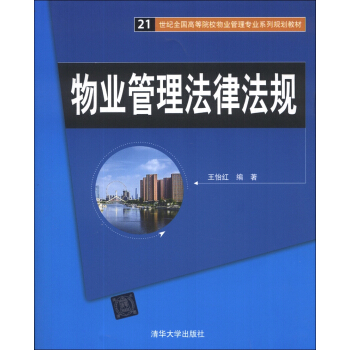
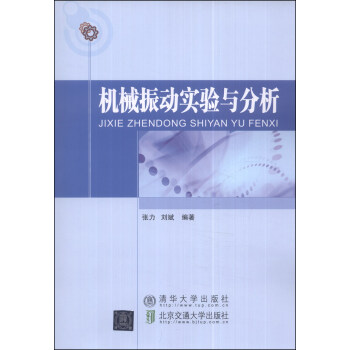
![人类行为与社会环境/高等学校社会工作专业主干课程教材 [Human Behavior and Social Environment] pdf epub mobi 电子书 下载](https://pic.tinynews.org/11444456/563c1aa5N46982e2d.jpg)
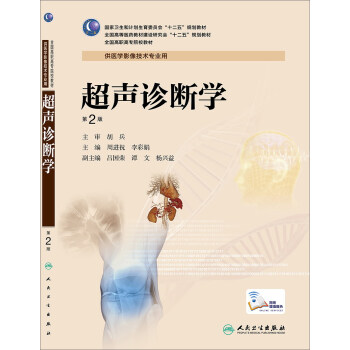
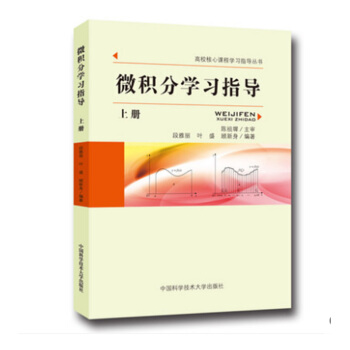
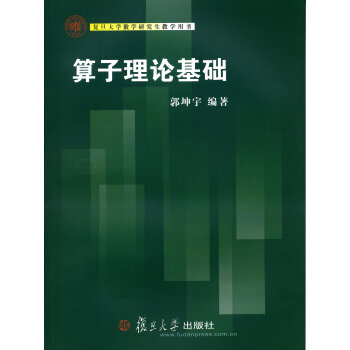
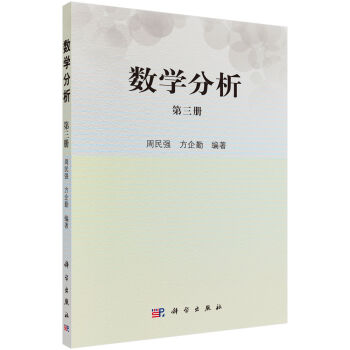
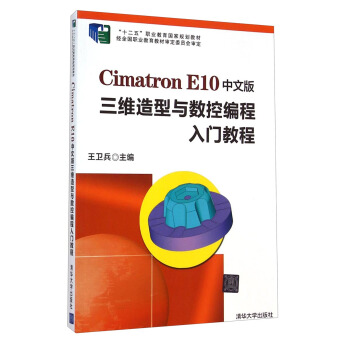

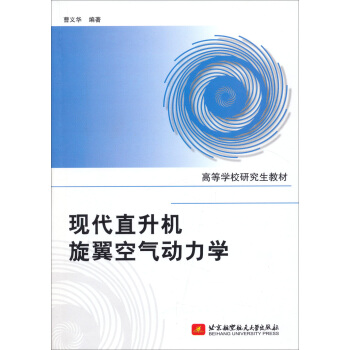
![辅助生殖护理技术/全国辅助生殖技术规范化培训教材 [Assisted Reproductive Techniques] pdf epub mobi 电子书 下载](https://pic.tinynews.org/11701338/556ecec5Naea9b985.jpg)
